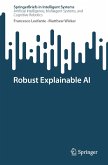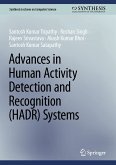A major strength of the book lies in its thorough examination of multimodal systems. Readers are introduced to a rich array of sensor technologies including wearable devices, environmental sensors, vision-based systems, and sound-based inputs. These components are described not only in terms of their individual functionalities but also in how they interact and fuse data to support complex inference tasks. The text walks the reader through system architectures-centralized and distributed-while emphasizing data fusion, synchronization, and real-time versus batch processing. Through practical examples such as fall detection alerts and activity recognition, the book highlights the engineering challenges and solutions involved in building robust, responsive, and user-accepted assistive systems. Ethical deployment, user engagement, long-term maintenance, and family involvement are all addressed in ways that reflect real-world concerns and user diversity.
The book also tackles some of the most pressing topics in AI today: data privacy, explainability, and trust. With an entire section dedicated to synthetic data, it explains how artificial data can be used to train effective models while safeguarding user privacy.
Dieser Download kann aus rechtlichen Gründen nur mit Rechnungsadresse in A, B, BG, CY, CZ, D, DK, EW, E, FIN, F, GR, HR, H, IRL, I, LT, L, LR, M, NL, PL, P, R, S, SLO, SK ausgeliefert werden.









